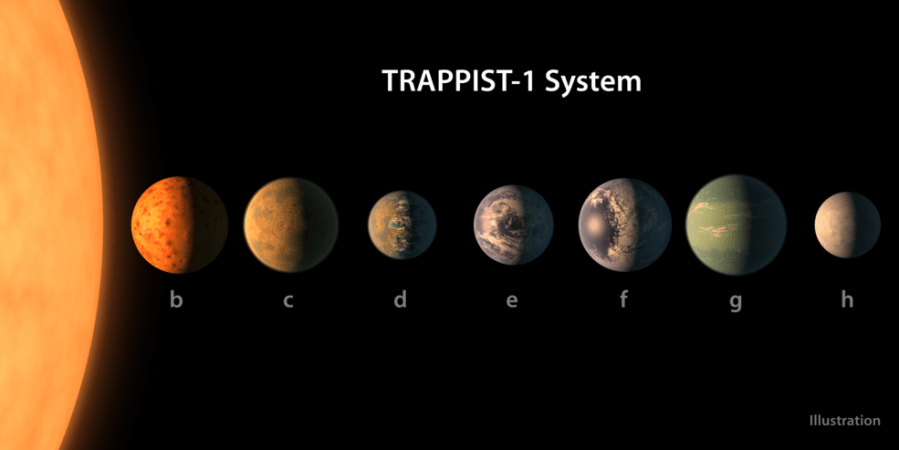
NASA researchers will be exploring the recently-discovered seven Earth-sized exoplanets orbiting the TRAPPIST-1 star to find out which ones are habitable.
Also Read: Mysterious fireball spotted in Tasmanian skies trigger conspiracy theories on Facebook
These exoplanets were found orbiting the star TRAPPIST-1, an ultra-cool dwarf star. This star is located in the constellation Aquarius, 40 light-years away from Sun.
Researchers are planning to analyse life-supporting planets with the help of the James Webb Space Telescope (JWST), which is under construction and likely to be launched in October 2018.
"If these planets have atmospheres, the James Webb Space Telescope will be the key to unlocking their secrets," said Doug Hudgins, Exoplanet Program Scientist at NASA Headquarters in Washington.
"In the meantime, NASA's missions like Spitzer, Hubble, and Kepler are following up on these planets," Hudgins added.

Presently, JWST is being tested by scientists and engineers at NASA's Goddard Space Flight Center. This telescope is expected to be the scientific successor to NASA's Hubble Space Telescope and will be one of the most powerful telescopes ever made. JWST will observe and analyse these exoplanets using its infrared capability.
"These are the best Earth-sized planets for the James Webb Space Telescope to characterize, perhaps for its whole lifetime," said Hannah Wakeford, postdoctoral fellow at NASA's Goddard Space Flight Center in Greenbelt, Maryland.
Apart from measuring the distance and size of the planets, it is crucial for scientists to know what the atmosphere of these planets is composed of and in what proportion.
"The Webb telescope will increase the information we have about these planets immensely. With the extended wavelength coverage we will be able to see if their atmospheres have water, methane, carbon monoxide/dioxide and/or oxygen," Wakeford stated.
JWST will be utilising a method known as spectroscopy, in which light will be analysed by dividing it into different wavelengths. This would help detect the components present in the atmosphere of these exoplanets by observing the unique wavelengths of these elements.
JWST also has the potential to use its abilities to explore another planetary system, which is as close as the TRAPPIST-1 exoplanet system.
Researchers believe that exoplanets e, f and g, present in the TRAPPIST-1 system are located in the habitable zone and will focus the JWST there. The atmospheric composition of these exoplanets will tell us if they possess liquid water or not.
As these Earth-like planets orbit a dwarf star, the signals emitted by them will be strong enough for the telescope to examine their atmospheric features.
"Two weeks ago, I would have told you that Webb can do this in theory, but in practice it would have required a nearly perfect target. Well, we were just handed three nearly perfect targets," said Shawn Domagal-Goldman, an astrobiologist at NASA's Goddard Space Flight Center.
Analysis of the TRAPPIST-1 exoplanet system will also help astronomers expand their knowledge in the field of planetology.
"This is the first and only system to have seven earth-sized planets, where three are in the habitable zone of the star," said Wakeford.
"It is also the first system bright enough, and small enough, to make it possible for us to look at each of these planets' atmospheres. The more we can learn about exoplanets, the more we can understand how our own solar system came to be the way it is. With all seven planets Earth-sized, we can look at the different characteristics that make each of them unique and determine critical connections between a planet's conditions and origins," Wakeford concluded.














